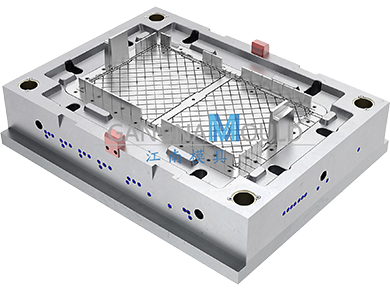Plastic Kitchenware Mould market context
Every kitchen uses plastic utensils, bowls, lids and containers that trace back to a dedicated mould process. Factories producing these moulds are seeing increased demand for kitchenwares that combine durability, cost‑efficiency, safe materials and rapid production cycles.
Compared to large automotive or packaging mould segments, kitchenware moulds represent a steady consumer‑goods stream rather than project‑based runs.

Plastic Kitchenware Mould factory production & cost metrics
For mould‑making plants focused on kitchenware, several key metrics determine competitiveness: mould cost, cycle time, cavity count and per‑part cost. Multi‑cavity moulds have emerged as a cost driver in high‑volume kitchenware applications. One guide shows that using moulds with eight, sixteen or more cavities can reduce per‑part cost significantly.
In raw material terms the injection‑moulding market (where plastic kitchenware moulds feed) was valued at USD 304.4 billion and is forecast to reach USD 481.6 billion by 2035 (CAGR ~4.26%).
In the U.S. plastics products manufacturing segment, production reportedly fell about 1.7% year‑over‑year in 2024 while employment declined ~0.9%. That implies factories making kitchenware moulds must improve efficiency to sustain output.
Plastic Kitchenware Mould materials and design technical advances
Material choice impacts kitchenware mould performance strongly. Popular resins for injection‑moulded kitchenware include ABS, polypropylene (PP) and polyethene (PE) because of toughness, ease of moulding and food‑contact compliance.
Factory practices emphasise precision mould design, high‑accuracy machining and tight quality control steps. For example, a high‑quality mould‑making process lists “great mould design, high‑precision machining equipment, seasoned bench workers and strong management” as key components.
In design innovation terms, there is a trend toward stackable container designs, interchangeable inserts in moulds (to produce different sizes), and simulation of material flow and stress points. These allow kitchenware moulds to meet diverse consumer needs at a lower cost.
Plastic Kitchenware Mould versus other mould segments
How do kitchenware moulds compare to other mould types, such as thin‑wall packaging moulds or automotive moulds? Kitchenware moulds typically face moderate volumes compared to packaging but higher complexity than commodity containers because aesthetics, food‑safety, stackability and consumer feel matter.
Packaging moulds often prioritise ultra‑fast cycle times and minimal material; kitchenware moulds must balance cycle time and robustness. For example, the packaging segment may aim for minimal wall thickness whereas a kitchen bowl must hold weight and resist deformation.
Given the global competition and mould‑maker concentration, factories specialising in kitchenware moulds must emphasise tooling precision, repeatability, customisation flexibility and material compliance to differentiate.
Plastic Kitchenware Mould factory operational challenges and solutions
Factories producing kitchenware moulds encounter several operational issues: material supply volatility (resin pricing, additives), equipment uptime, cooling system optimisation, scrap rate control, and regulatory pressures (food‑contact certifications, recycling mandates).
To address these, leading factories adopt automated inspection systems, simulation for cooling channel design, multi‑cavity moulds to spread overhead cost, and modular mould inserts to reduce tooling investment per product variant. They also explore bio‑based or recycled resins where allowable in kitchenware (subject to food‑contact regulation). These steps help reduce waste, increase throughput, lower per‑unit cost and raise product quality.
Conclusion
In summary, the Plastic Kitchenware Mould segment offers a strong opportunity for mould‑making factories that commit to efficient design, material optimisation, high‑volume tooling strategies and regulatory compliance.Since kitchenware remains a staple in daily life, manufacturers that enhance production efficiency, lower per-unit costs, and ensure consistent product quality are well-positioned for success.



 English
English русский
русский Español
Español Français
Français عربى
عربى 简体中文
简体中文





